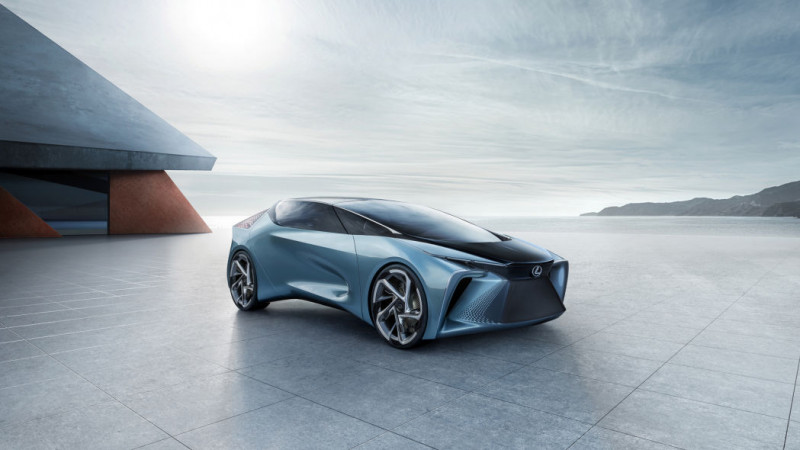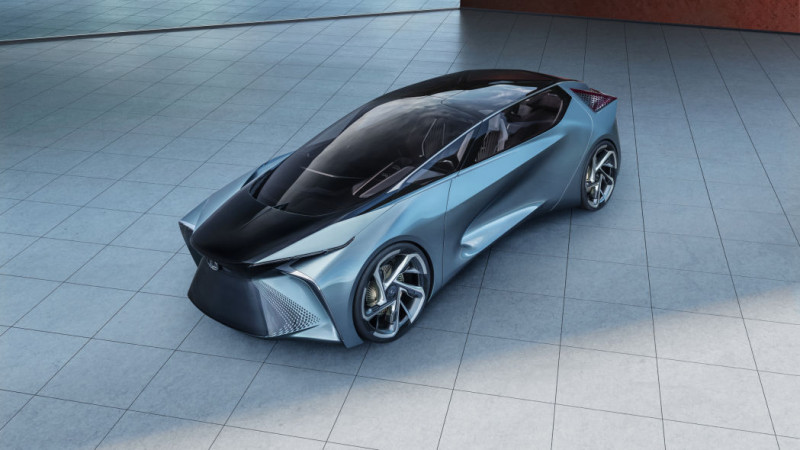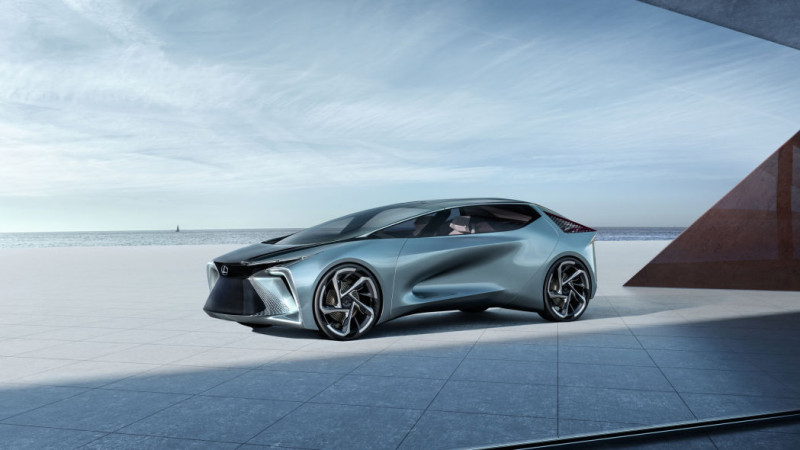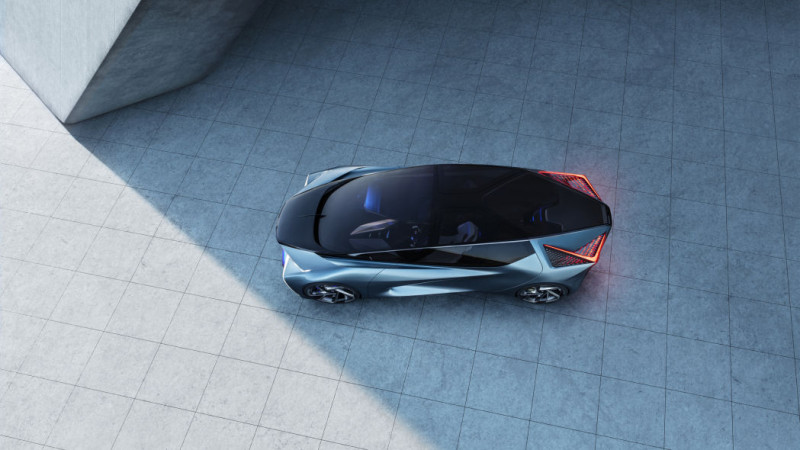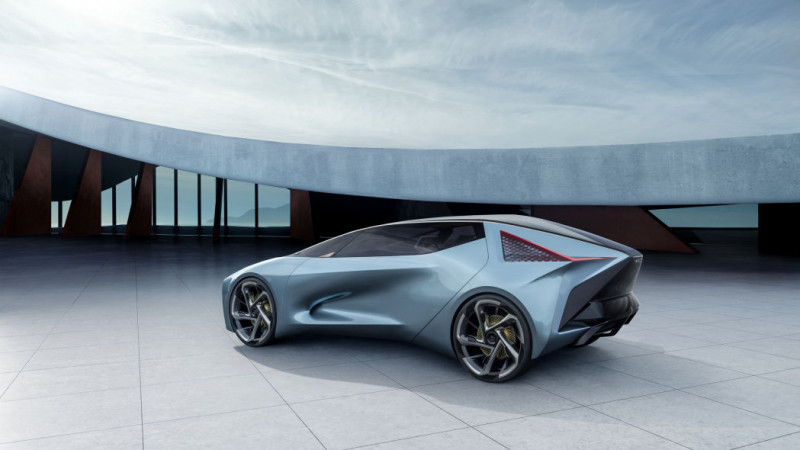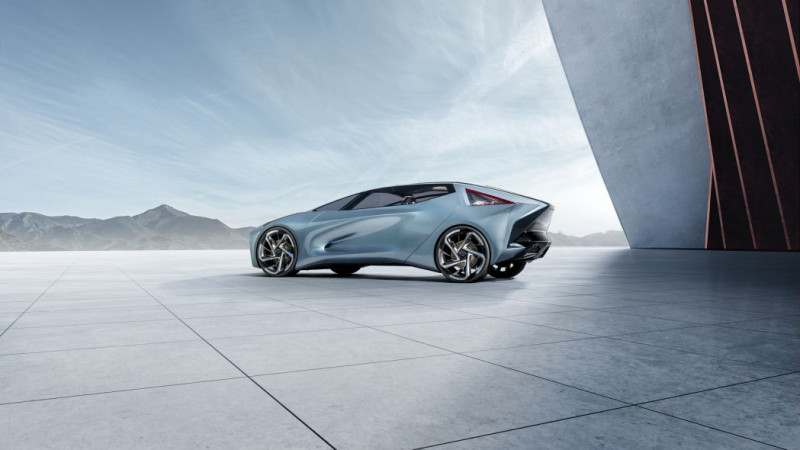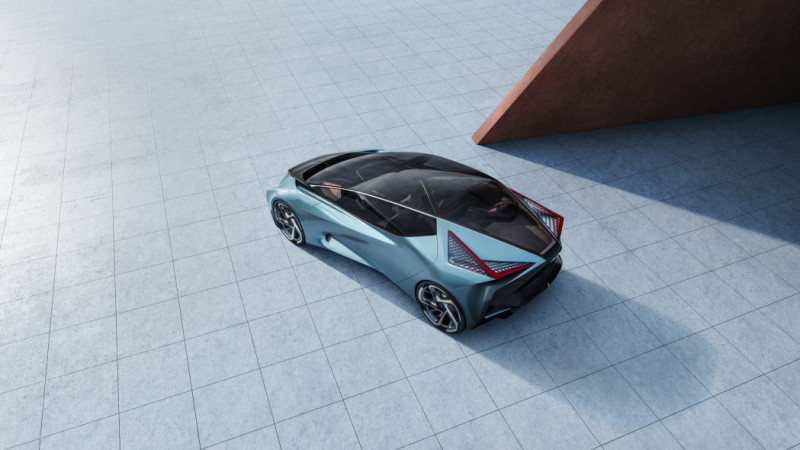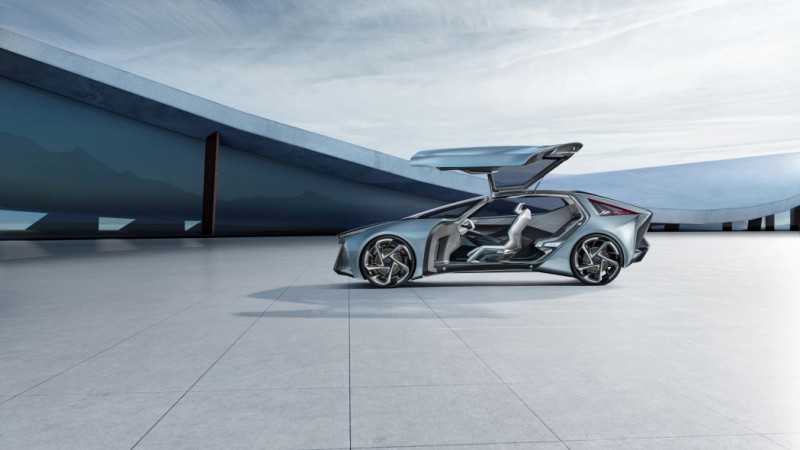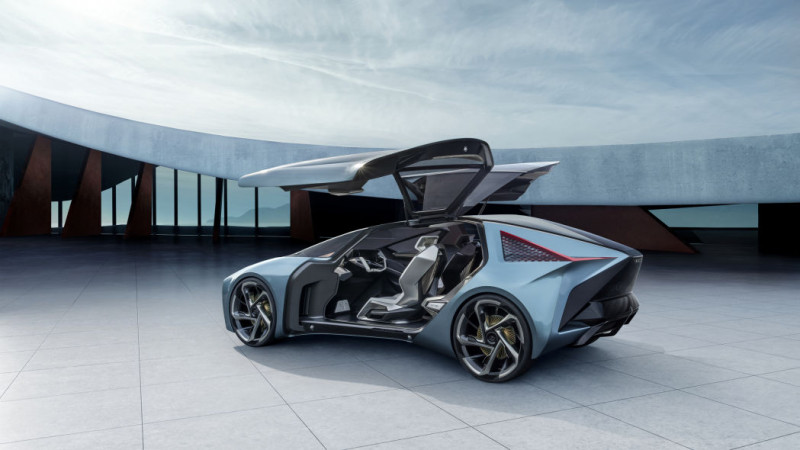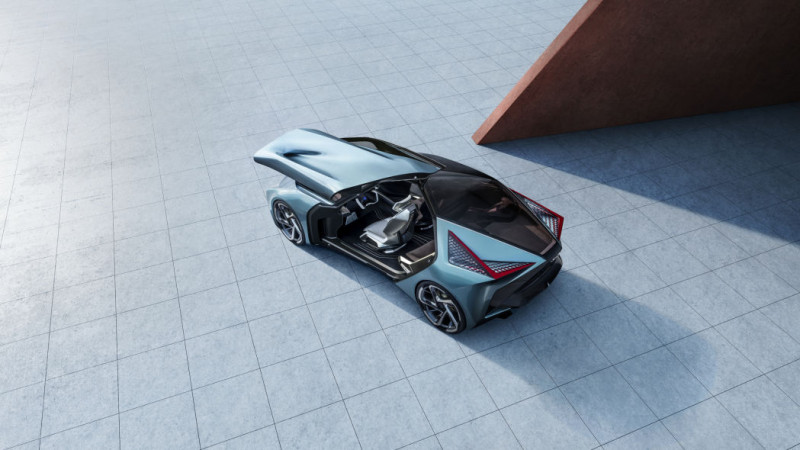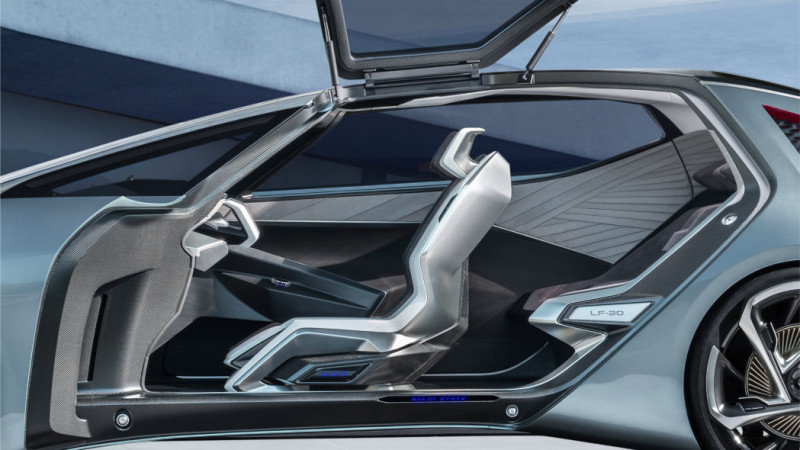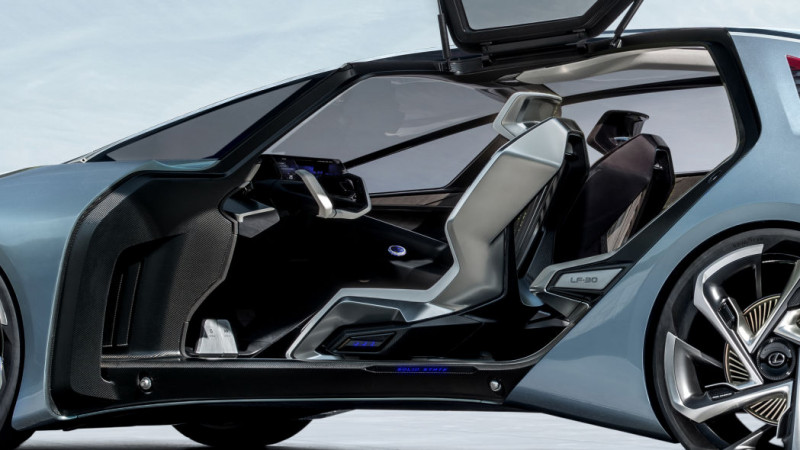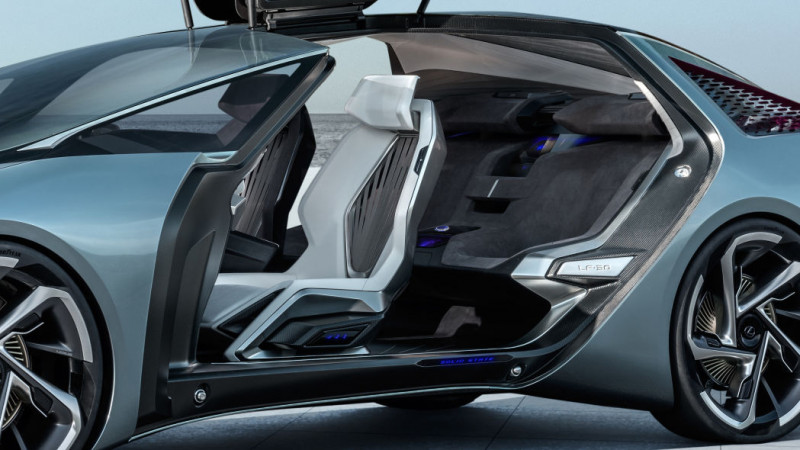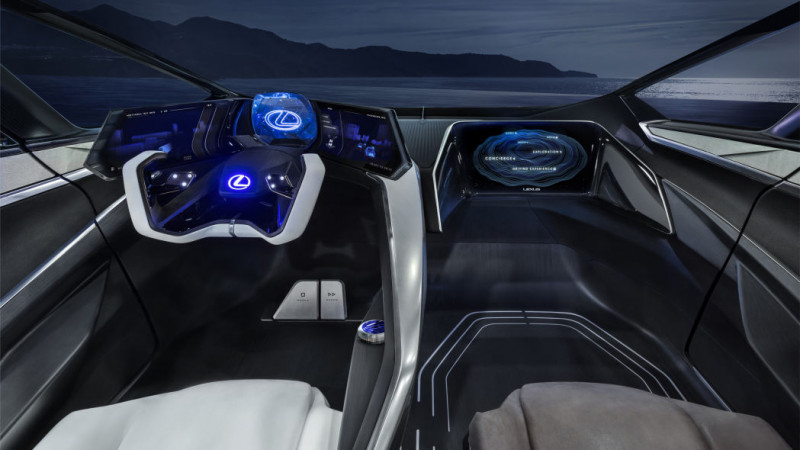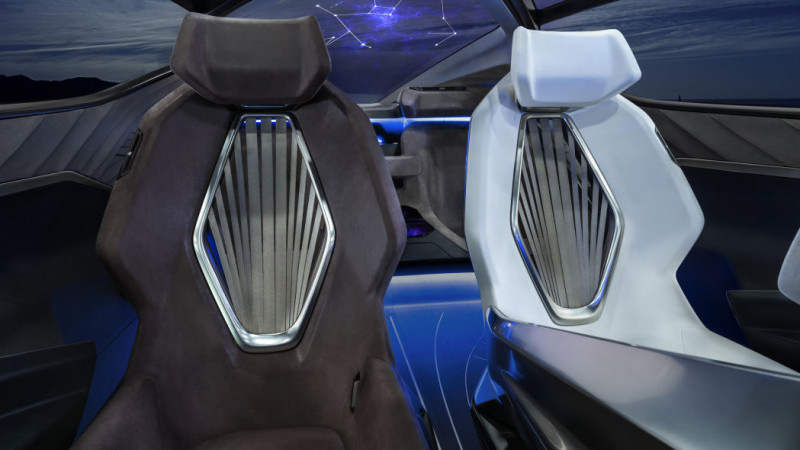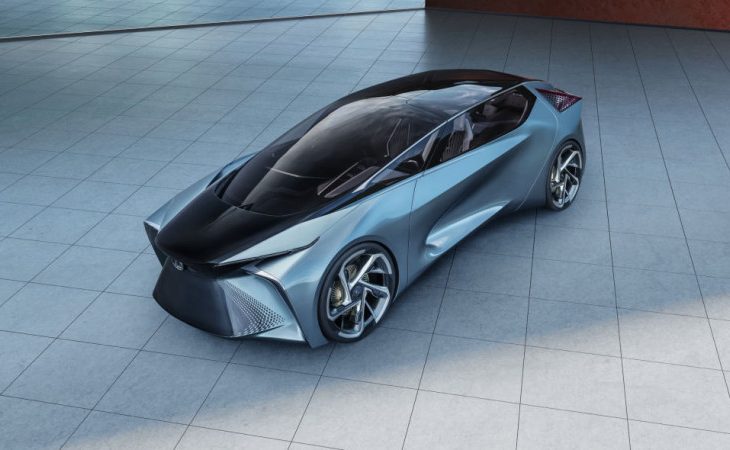When it wasn’t attempting to hypnotize attendees with the sophisticated sound-and-vision hokum ‘Senses Theater’, luxury automaker brand Lexus waylaid the curious at this year’s Tokyo Motor Show with a forecast for 2030: ‘Lexus Electrified’ and its concept figurehead, the LF-30.
Rolling out a concept that’s associated with an upcoming production reveal is a classic bit of auto-industry marketing: it’s good for stockholder morale, and the inevitable press coverage makes for free advertising, and extensive brand and model exposure. And the LF-30’s arresting future-shock shape—a daring creative riff on wedge designs—paves the way for the reveal of Lexus’ first production battery electric vehicle, which at this point in time remains shrouded in mystery, but will be brought into hard focus with Lexus’ official reveal next month.
Like many recent EV and autonomous-car concepts, the interiors stress an arresting sense of space. The LF-30’s footprint is a large one, big enough to support the layout changes for an autonomous design that can accommodate leisure and social interaction, and there’s a huge amount of glass in the build.
The concept comes with a concept of its own: ‘Tazuna’. Lexus’ press release states that ‘Tazuna’ is a philosophical approach that coordinates driver and tech. The result is a synergistic union of driver and car that allows the driver to sustain a kind of ideally effortless focus during operation. Gesture control, augmented reality, and a comprehensive head-up display helps choreograph the dance.
Lexus packed this vision of the near future with technological innovations that expand on presently available features and prognosticate AI enhancements that might exist in ten years. The concept is powered by four motors—each dedicated to a wheel—and features steering by wire, as well as Lexus Advanced Posture Control, which adjusts power allocation in order to compensate for road conditions and speed.
